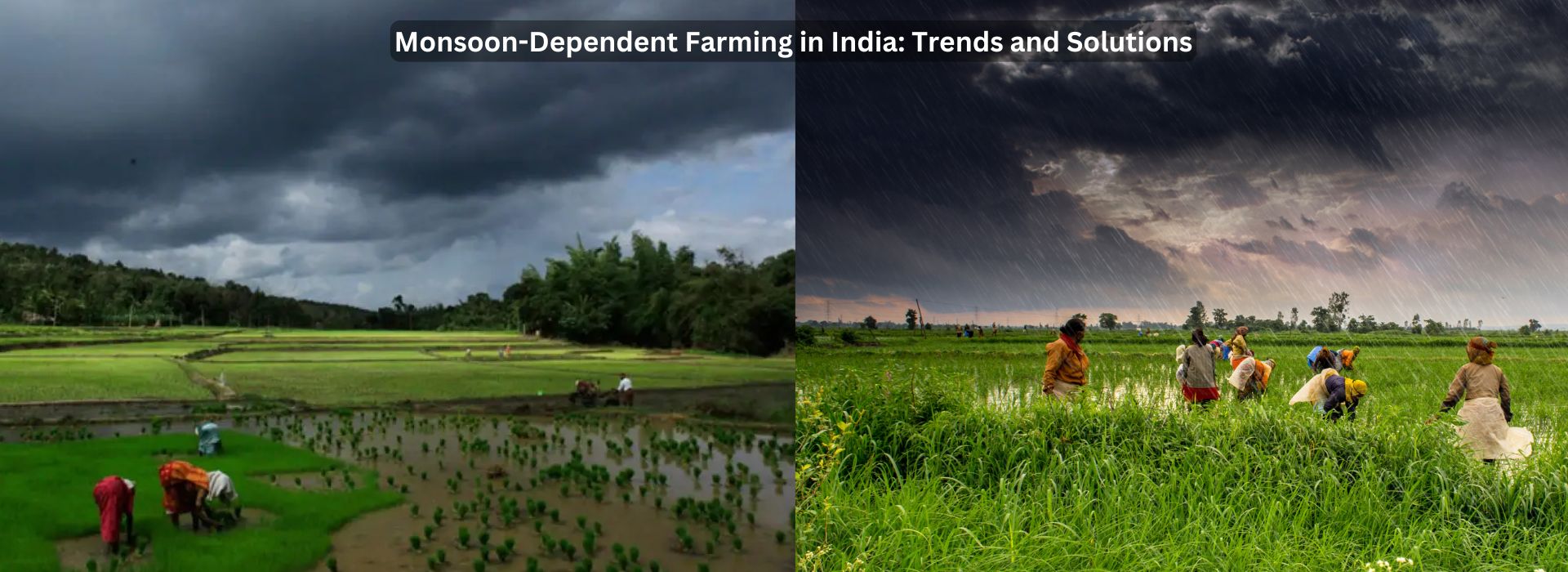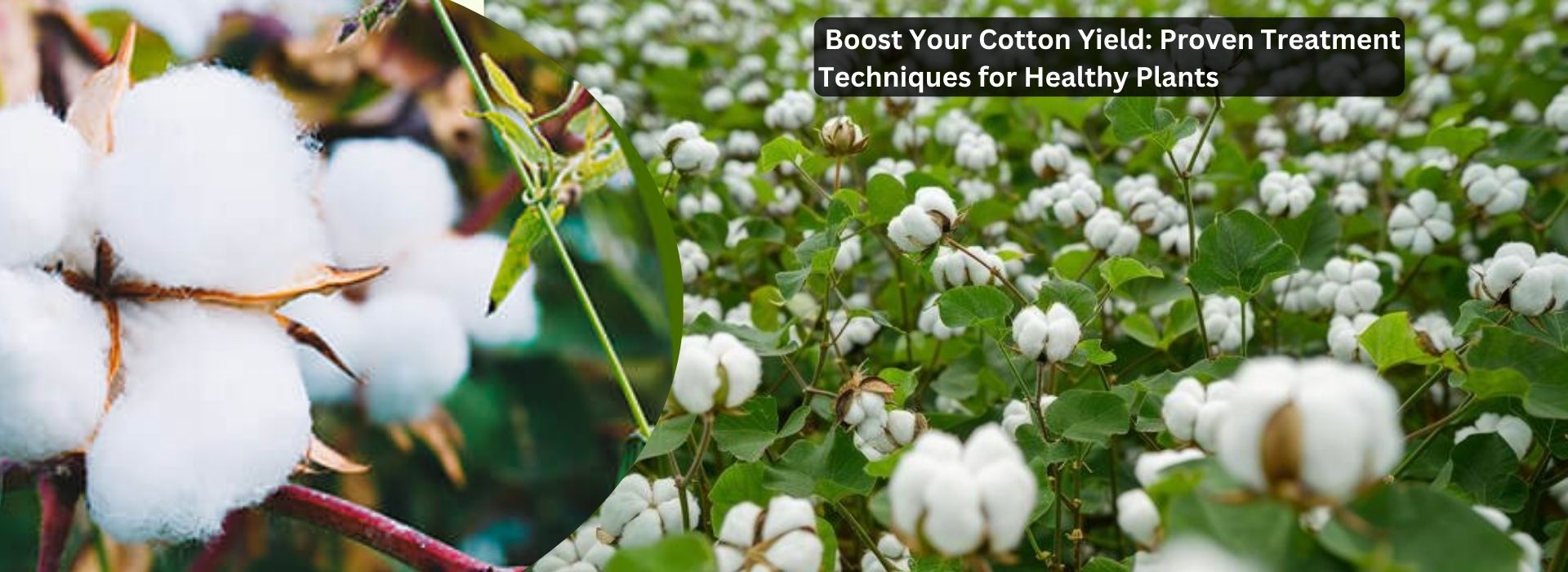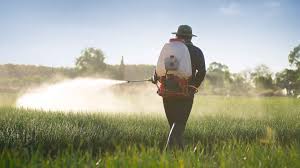Monsoon-Dependent Farming in India: Trends and Solutions
June 12, 2025Monsoon-Dependent Farming in India: Trends and Solutions
India’s agriculture has long been
tied to the cycle of the monsoon. For millions of farmers across the country,
the arrival of the southwest monsoon marks the beginning of the agricultural
year. However, with climate variability on the rise, monsoon-dependent
farming—once predictable and life-sustaining—is now fraught with
uncertainty.
This blog explores the latest trends
in monsoon-based agriculture and the solutions being adopted to
overcome its inherent vulnerabilities.
The Importance of Monsoon in Indian Agriculture
India receives about 70% of
its annual rainfall during the southwest monsoon, typically from June to
September. Over 50% of the country’s net sown area is still rain-fed,
making the economy—and especially rural livelihoods—heavily reliant on the
monsoon.
Key crops grown during the
monsoon season (Kharif season) include:
- Rice
- Maize
- Cotton
- Pulses
- Millets
- Groundnut
Current Trends in Monsoon-Dependent Farming
1. Shifting Rainfall Patterns
Monsoon patterns are becoming
increasingly erratic due to climate change:
- Late onset or early withdrawal
- Uneven spatial distribution
- Heavy, localized rainfalls followed by long
dry spells
This unpredictability affects
sowing times, crop growth, and harvest quality.
2. Increased Risk of Crop
Failures
Frequent floods and droughts are
impacting both yields and farmer incomes. In rain-fed areas like
Bundelkhand, Marathwada, and parts of Rajasthan, crop losses are becoming a
regular occurrence.
3. Overdependence on
Water-Intensive Crops
In several states, rice and
sugarcane, which require large volumes of water, are still widely
cultivated—even in low-rainfall zones—leading to groundwater depletion and soil
stress.
4. Technology Adoption Is
Rising
Digital tools, mobile apps, and
satellite-based weather services are now being used to inform farmers about
rainfall forecasts, pest alerts, and best sowing windows.
Solutions to Strengthen Monsoon Farming
While the risks are real, several
promising strategies and innovations are helping farmers adapt to
changing monsoon behaviour.
1. Rainwater Harvesting and
Water Conservation
- Check dams, farm ponds, and percolation tanks
help capture rainwater.
- Mulching and drip irrigation minimize
water loss and improve soil moisture retention.
2. Climate-Resilient Crops and
Varieties
- Drought-tolerant and short-duration crop
varieties are being introduced by ICAR and agricultural universities.
- Millets and pulses are being promoted for
their lower water requirement and climate resilience.
3. Crop Diversification
Farmers are being encouraged to
move away from monoculture (like rice-rice cycles) toward mixed farming
systems that include vegetables, legumes, and livestock—spreading risk and
improving income.
4. Weather Forecasting and
Early Warning Systems
- Organizations like IMD, Skymet, and Agritech
startups provide real-time weather alerts.
- SMS services and mobile apps like Kisan Suvidha
or AgriApp help farmers plan and respond proactively.
5. Government Schemes and
Policy Support
- PMFBY (Pradhan Mantri Fasal Bima Yojana):
Crop insurance scheme to protect against yield loss.
- PMKSY (Pradhan Mantri Krishi Sinchayee Yojana):
Promotes micro-irrigation and water use efficiency.
- Soil Health Card Scheme: Helps farmers apply
the right nutrients for better resilience.
The Road Ahead
To make monsoon-dependent farming
more sustainable, India needs a multi-pronged strategy involving
technology, infrastructure, education, and policy. Farmers, scientists,
startups, and governments must work together to:
- Build climate resilience
- Improve market linkages
- Ensure timely credit and insurance
- Encourage sustainable agricultural practices
The monsoon may be unpredictable,
but resilient systems and informed decisions can help farmers
weather the storm—and even thrive despite it.
Conclusion
Monsoon-dependent farming is both
a heritage and a challenge for India. As the climate continues to shift,
adapting to these new patterns is not just about survival — it’s about shaping
a sustainable, food-secure future for the nation.
By embracing smart solutions,
preserving indigenous wisdom, and strengthening support systems, India can
ensure that the monsoon remains a blessing, not a burden.
At krishibazaar.in, you can
find and buy various agricultural products. For agricultural guidance on
selecting the most suitable products for your crops, please contact or WhatsApp
at +917887880887.






Guest reviews
No reviews found for this Blog